I Ended Up on a Research Binge at Three in the Morning and Now I Know About Dogs

March 18, 2021
In yet another thrilling installment of “I Ended Up on a Research Binge at Three in the Morning and Now I Know This Stuff”, here’s five different breeds of dogs that can work as service animals. Because I have nothing better to do than go on research binges at three in the morning when I can’t sleep.
Let’s start it off with the top of them all:
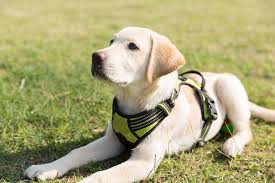
The Labrador Retriever
Labrador Retrievers, also known as Labs (which is what I’m going to be calling them because I don’t currently have the attention span to write out “Labrador Retriever” a bajillion times and I am also not going to put you through that, either), are one of the most recognizable service dogs. Known for their high intelligence and their extreme friendliness, Labs can learn new tasks quickly and form strong bonds with their owners. They’re often trained to aid people who are blind, and they’re one of the world’s top service dog breeds. They can also work in law enforcement, as well as in sporting and hunting.
Physically, Labradors are usually between 21.5 and 22.5 inches tall at the shoulder. Weighing between 55 and 80 pounds, they have a short and dense double coat that comes in black, chocolate, or yellow. This yellow actually ranges in color, going from a lovely near-white pale yellow to even a fox red tone. Very pretty.
Although Labs have strong, powerful jaws, they actually have very soft mouths. This is actually where some of those TikTok trends such as handing your dog an egg come from. Additionally, it makes Labs optimal for picking up medication or other objects that their disabled handler might need.
Of course, Labs aren’t perfect. They shed. Additionally, like every other service dog, a trained Labrador can be expensive (ranging between eight thousand and twenty thousand dollars). When they get older, the breed is also prone to arthritis.
Next up is breed number two people know of:
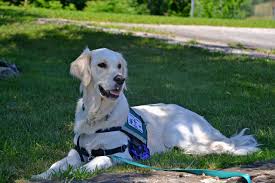
The Golden Retriever
Much like Labs, Goldens are very intelligent and easy to train as well. They look friendly, which makes them approachable. Additionally, they are trustworthy, loyal, and strong dogs that can put in a full day’s work. They’re used for as guide dogs for the blind and for hearing dogs for the deaf. Outside of service dog work, they can work in hunting, detection, and search and rescue.
Golden Retrievers are big dogs. Ranging from 20 to 24 inches, and 55 to 75 pounds, they have straight or somewhat wavy fur that comes in various shades of gold or cream. They also have a fox red and near-white tones as well, although these are fairly uncommon. Much like Labs, they also have soft mouths, due to both breeds original use as hunting dogs. The hunters didn’t want them to damage the game birds, so as a result they bred soft mouths into the dogs.
Goldens also have their own downsides, however. Fully trained retrievers from a service can cost up to $25,000! Additionally, they shed heavily. As a result, they need to have regular grooming appointments.
The third breed on this list is another common service dog:
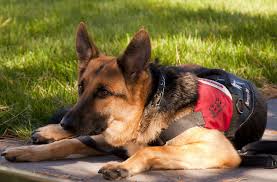
The German Shepherd
German Shepherds are known for being guard dogs and police dogs. They can be intimidating, but they’re also smart. With a great sense of smell, they don’t just help as detection dogs but also as medical alert dogs for diabetic owners. Since they’re incredibly intelligent, they’re easy to train and also well behaved.
Physically, they’re another big dogs (all of the dogs on this list are large). They’re bigger than Goldens, ranging from 22 to 26 inches and 49 to 88 pounds. With a double coat that comes in not only the familiar tan with a black saddle, but also sable, solid black or white, and even bi-color.
Unfortunately, German Shepherds’ size can also be an issue. They shed a lot. Even more, there are several bloodlines. Not all of them are meant for service dog work. Some, specifically bred to be working dogs, don’t have an “off switch” to this drive. Meanwhile, those bred for show might be skittish, which is another bad trait for a service dog to have.
Now onto the first of two unusual breeds of service
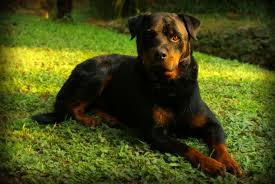
Rottweiler
Rottweilers are unusual breed. Bred for herding livestock and pulling meat carts to the market, they’re now used to be search and rescue dogs, guard dogs, and police dogs. They’re medium to large dogs, coming it at 22 to 17 inches tall and 77 to 132 pounds. These short-haired, double-coated dogs commonly come in black and tan or black and mahogany colors.
Rottweilers are considered one of the oldest breeds in the world, dating back to Roman times as herder or driver dogs. They were also used when the legions marched over the Alps. When WWI made a great demand of police dogs, Rottweilers were bred for the role and saw service in various areas in both world wars, as messengers, ambulance, draught, and guard dogs.
Unfortunately, because of their appearance and their history of roles, they’re considered a bully breed. Some people might see them as threatening even in a service dog role, mostly because they could appear to be aggressive. Additionally, although Rottweilers are considered “average” according to a 2008 survey about bites/bite attempts towards owners and other dogs, their instinctual terriorialness can cause them to be more aggressive than average towards strangers.
And on to the other unusual breed on this list;
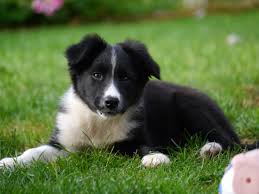
The Border Collie
Border Collies are known for being herding dogs. They’re incredibly intelligent, being able to pick up on subtle body cues that can actually help in detecting the emotions of those who have psychiatric episodes. This allows a trained service dog to not only detect these episodes but to help minimize and mitigate the effects. Border Collies also have a good sense of smell, which can help those who have diabetes or blood-sugar-related issues. They have a strong work ethic, intelligence, and also a lot of determination.
These dogs are also easily recognizable in their most common coloring, which is usually some variant of black and white. Coming in at about 18-22 inches tall and 26-44 pounds, these dogs have a double coat that comes in quite a few colors other than black and white. This includes solid colors, bi- or tri-colors, various shades of merle and sable, and even some forms of red.
Unfortunately, the Border Collie’s best traits are also some of its worst. These dogs require patience and determination to train, which can be physically and emotionally exhausting for their handler due to the sheer amount of energy these dogs possess. Additionally, service dogs need to get along with whoever they meet. Being overly protective, sensitive, or aggressive can cause issues.
There wasn’t a particular reason that I chose these five dogs, they were just the ones that I ended up going on a research binge on. Anyways, that’s pretty much it. Hope you enjoyed the article, and if not…sorry?
